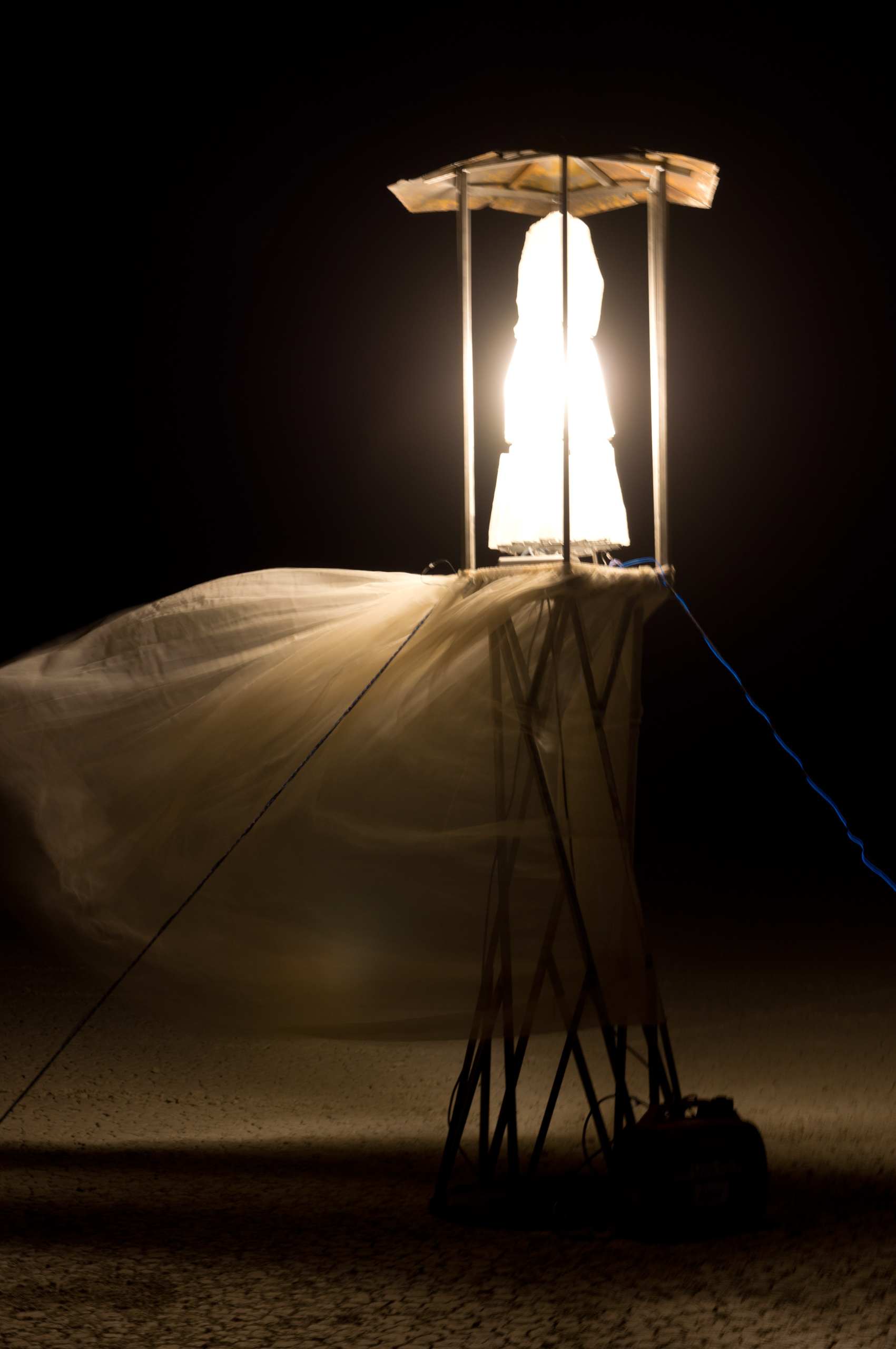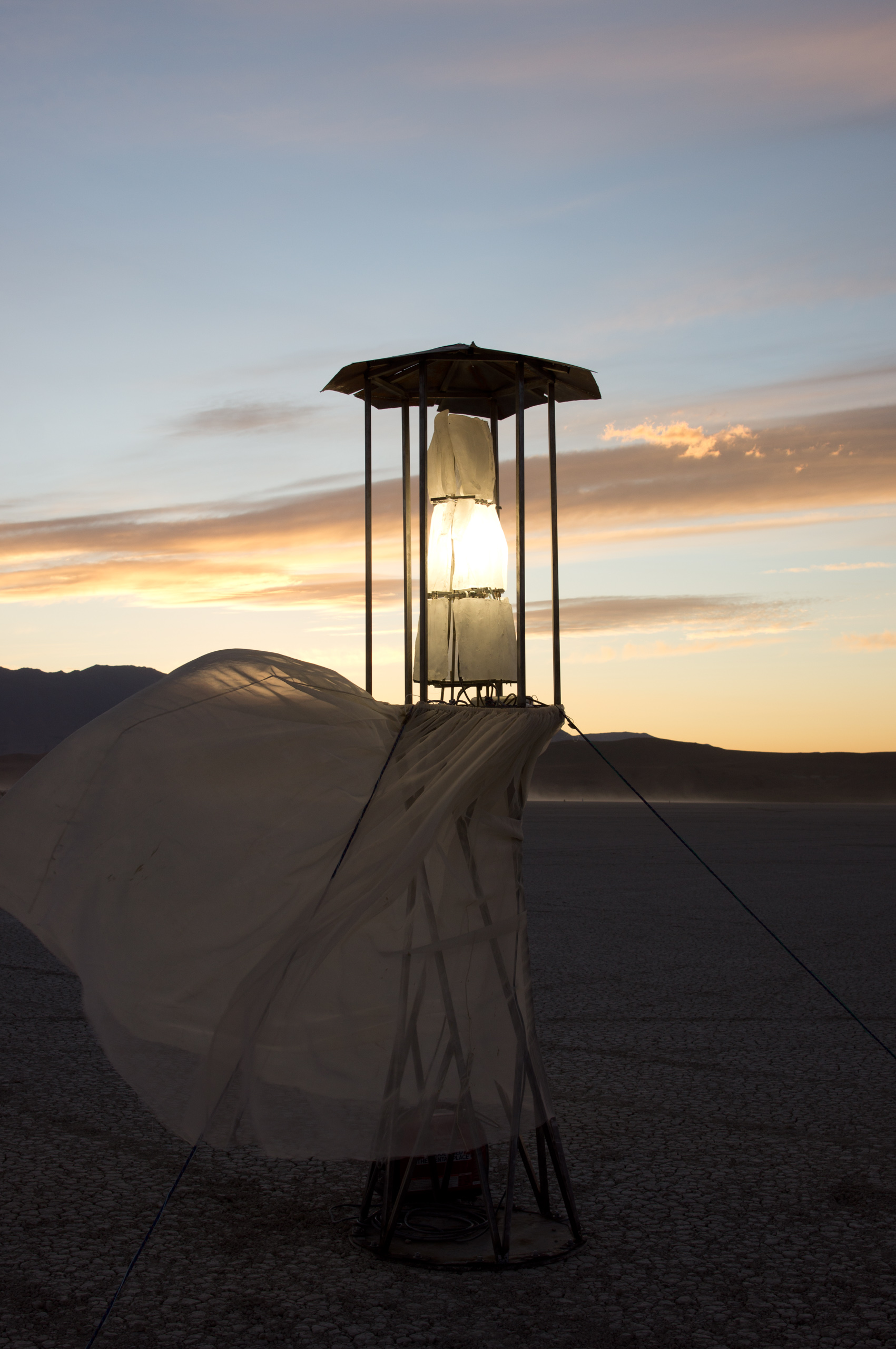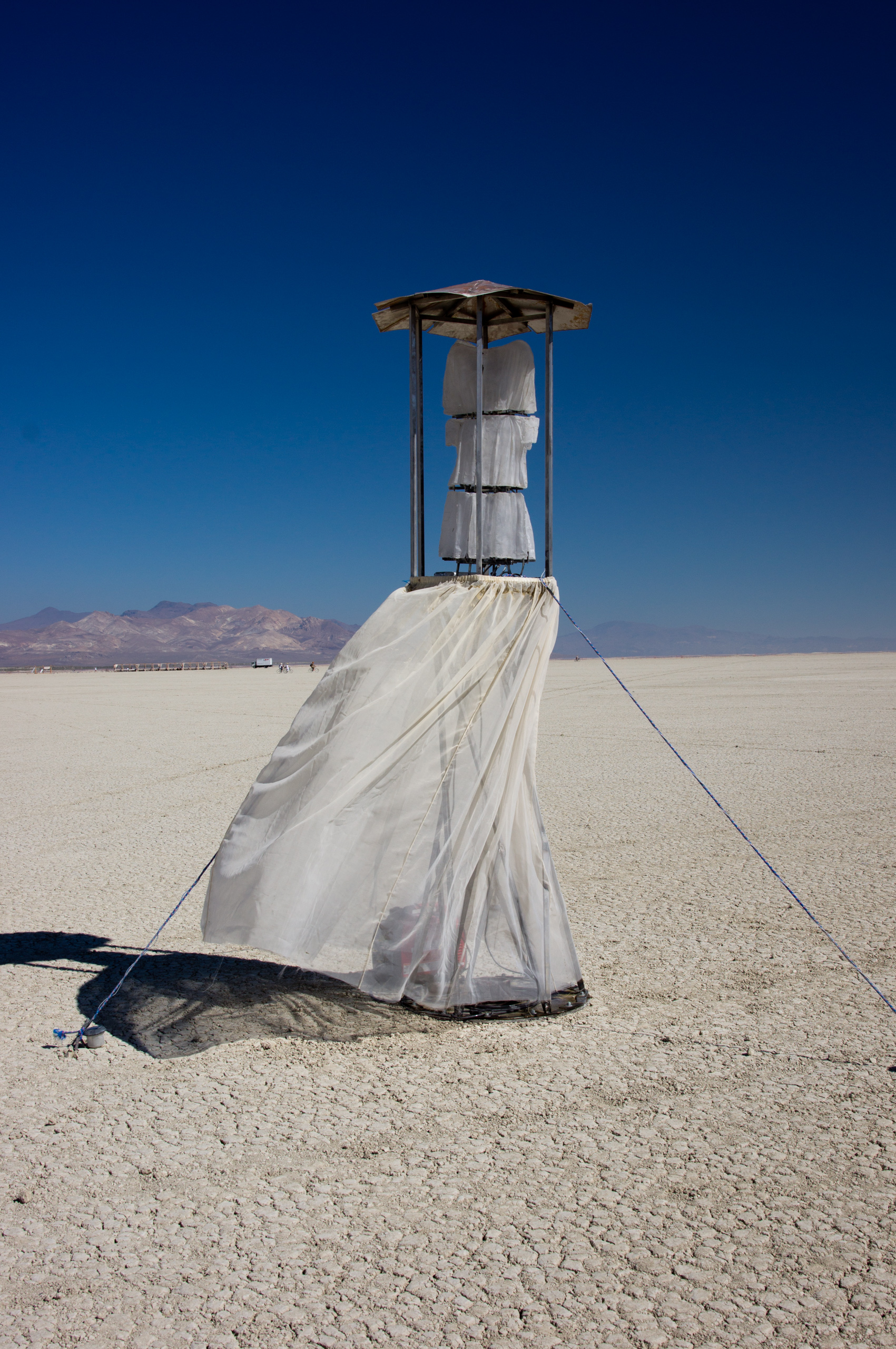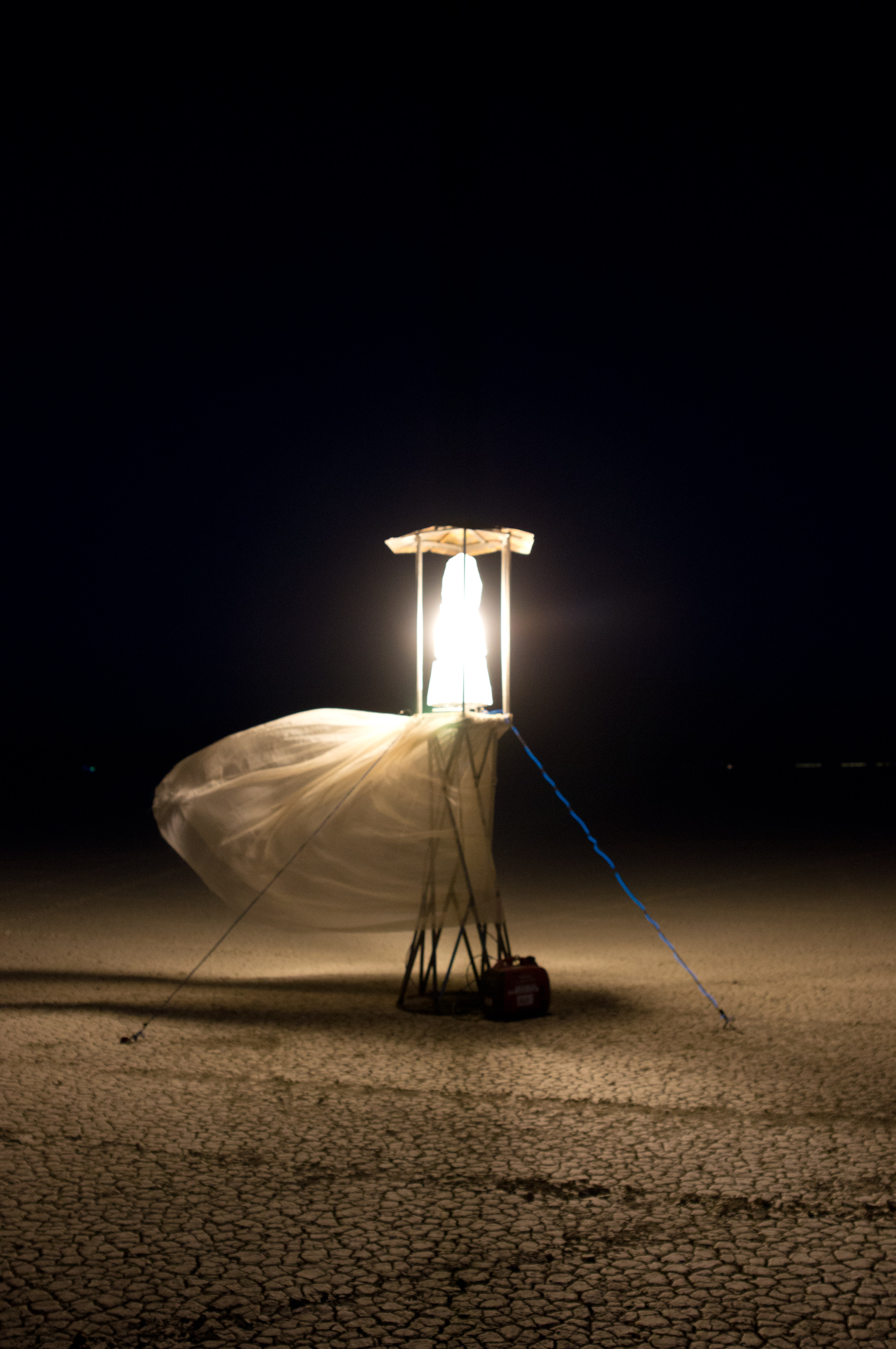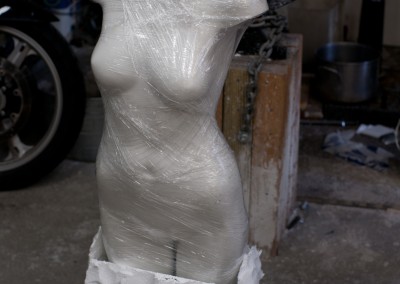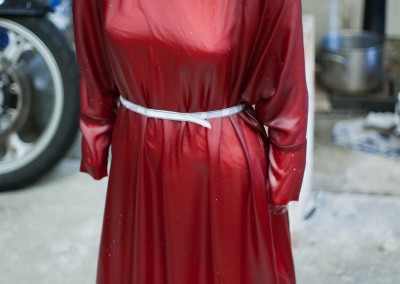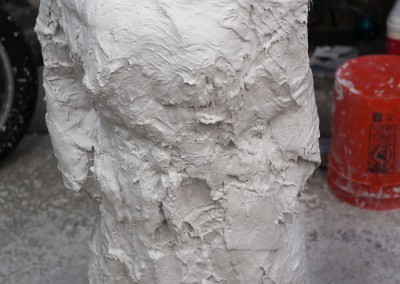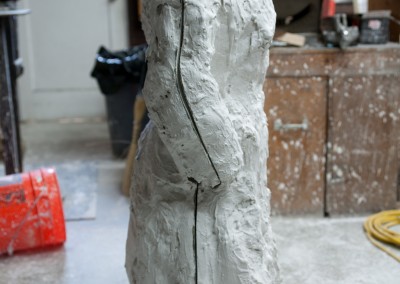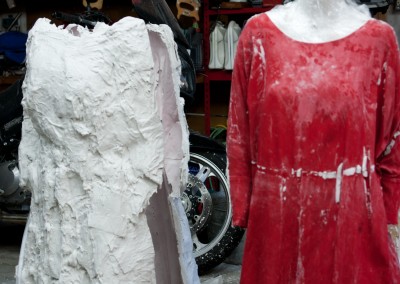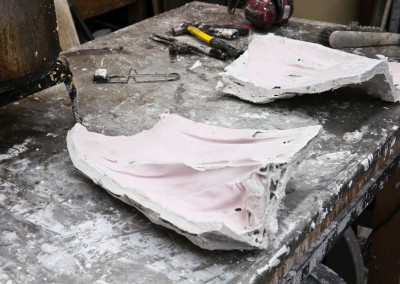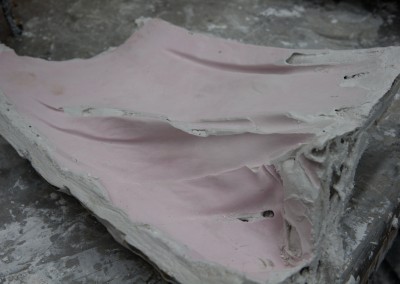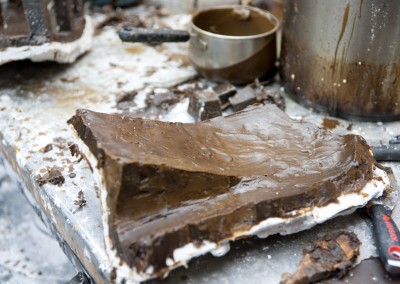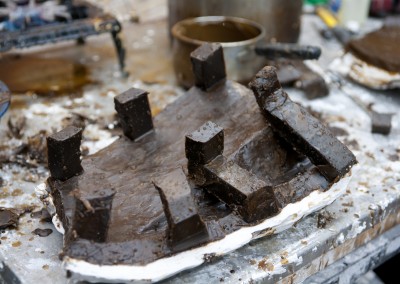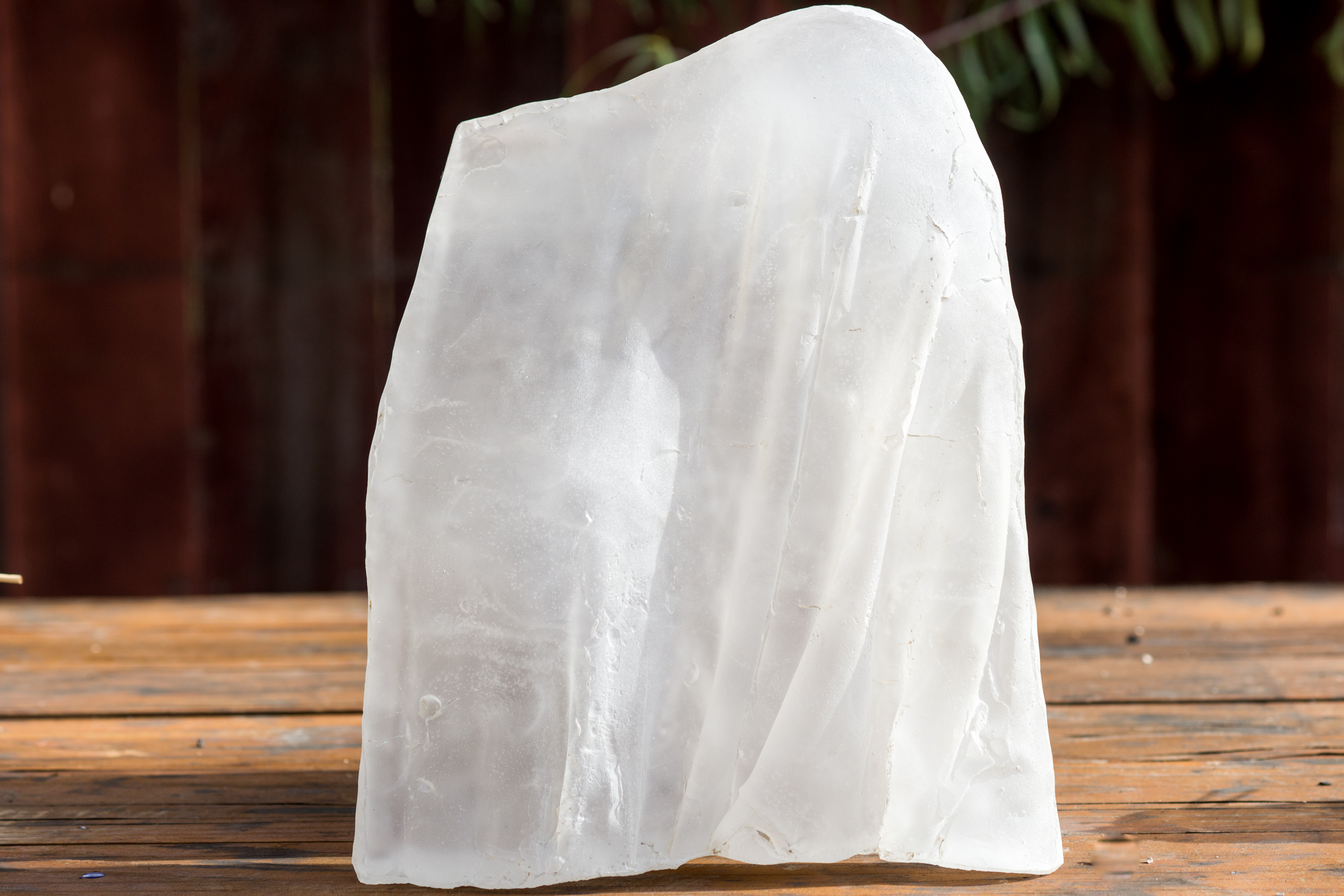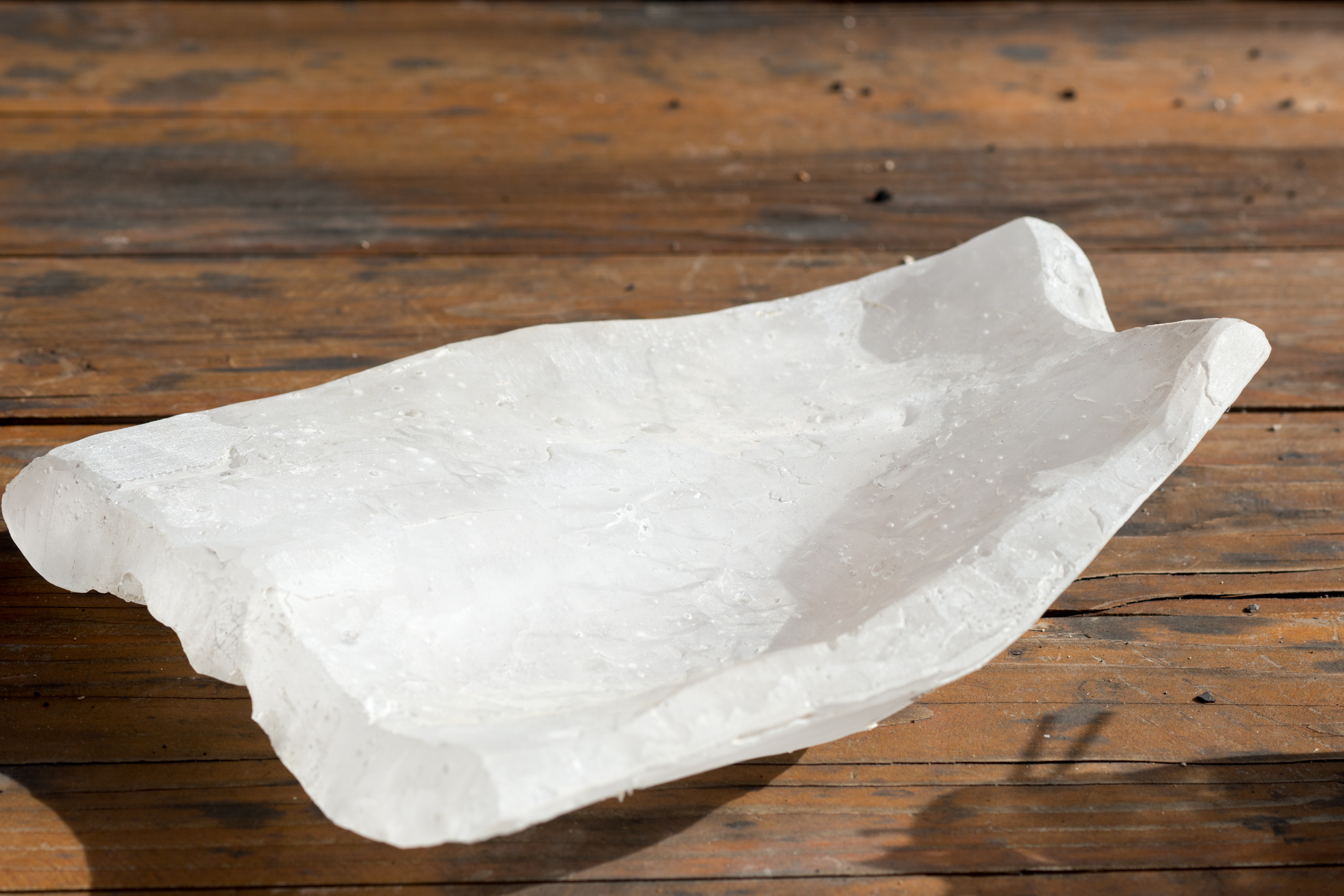Snow Queen

This is a lighthouse, casting a brilliant light over the desert, calling to those who are wandering or lost. The lighthouse glass is a woman’s dress, the light is her heart, shining through her body with incredible intensity, energy. and power, offering aid to all who are around, safety and guidance.
I constructed the lighthouse for Burning Man 2011. By then, I had had a little more experience with glass, and I wanted to do something big. I was in love the work of Karen LaMonte, and I wanted to cast a life-sized figure. However, my kiln is pretty small, so I would have to do it in pieces, and casting time would be a factor. I couldn’t afford multi-week castings, so I wanted to limit the glass thickness to 1″ max.
The following images show the final result. The dress is cast in 12 pieces, two wide, and three high. The skirt around the lighthouse was beautiful, streaming in the wind. It was made by my sister Liz.
Construction
For the construction, I started with a manikin and a (red) dress my sister Liz donated for the purpose. The idea is to make a plaster mold of the dress, and then reconstruct the dress shape in wax.
The manikin is made of a composite board kind of substance that I didn’t think would respond well to water, so the first step was to wrap the manikin in plastic wrap (like Saran wrap) to keep it dry. For the next step, I drenched the dress in corn oil so that the plaster would not stick to it. I also added some styrofoam at the base to hold the dress out.
Applying the plaster/silica
The next part was the tricky part. I painted the the dress with a plaster/silica mix. I started with thin coats applied with a paint brush to capture the detail of the dress, and also to provide the strength to hold up the outer layers. For the outer coats I let the plaster/silica harden enough so that I could use my hands to apply subsequent layers.
This mold is used in the firing, so it is important to use a plaster/silica mix to withstand the temperature. It also needs enough strength so that it doesn’t break when cutting the mold apart as well as during firing.
Cutting apart the mold
Once the plaster/silica mold has hardened, we can cut it apart. I waited until the next day to be sure that the mold had completely hardened, and dried a little, then I used an oscillating multi-tool to cut it apart. These are cheap at Harbor Freight, both in price and quality. Regardless, it worked perfectly to separate the plaster along the sides without destroying it — preserving the dress too!
Wax models
Now that the plaster/silica mold was split, I cut it into 12 parts, and painted it with wax. The plaster/silica pieces had some imperfections due to bubbles, but overall the quality was quite good, capturing the fiber texture in the cloth. I painted each of the pieces with wax, to about 1″ thick, and added additional wax for filling.
The final step is to surround this entire assembly with plaster/silica, melt out the wax, and then place it in the kiln for firing. I added a large reservoir for the glass cullet, so that during the firing, the glass fills space that was previously occupied by the wax.
Casting
The following photos show a typical casting. I decided to keep the raw surface texture of the cast piece, both due to time, but also because I thought it captured the elements more fully. Perhaps someday I will change my mind and polish the glass, but I like it this way for now.
The final step was to construct a stand to hold the glass in place, and the lighthouse tower itself. This was relatively easy (steel seems so easy in comparison).
Since Burning Man, I’ve dismantled the lighthouse and the stand and the dress sits in my garage, waiting for her own resurrection.

